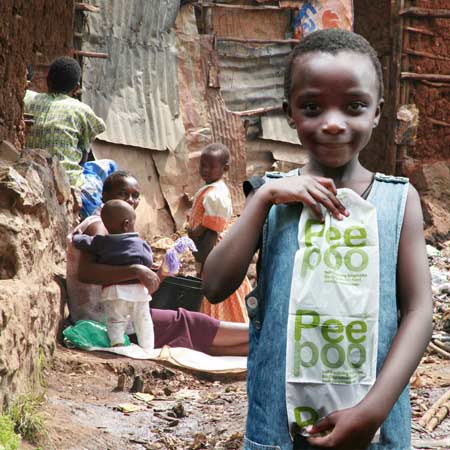
Peepoo bag by Anders Wilhelmson
Designer Anders Wilhelmson, in collaboration with Camilla Wirseen and Peter Thuvander, has developed the Peepoo bag - a single-use, disposable toilet bag intended to improve sanitary conditions in developing nations.
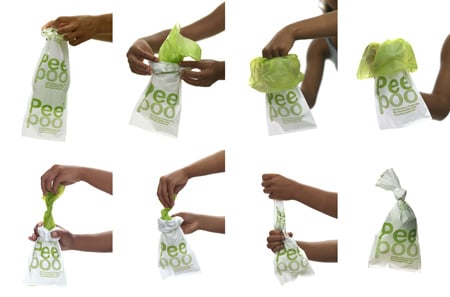
The Peepoo bag is made from degradable bioplastic lined with urea.
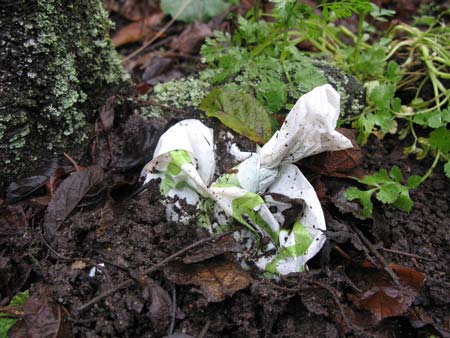
The used bags are clean and safe to handle, and remain odour-free for at least 24 hours, meaning they can be stored in the immediate area.
Update: this project is included in Dezeen Book of Ideas, which is on sale now for £12.
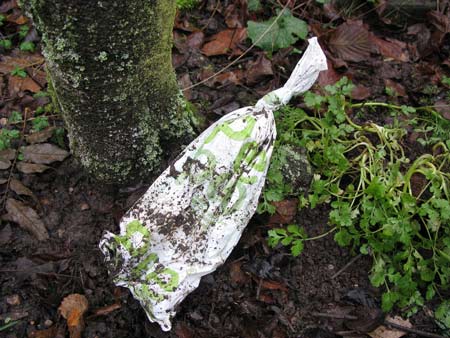
After two-four weeks the treated faeces can be used as a high-value fertiliser.
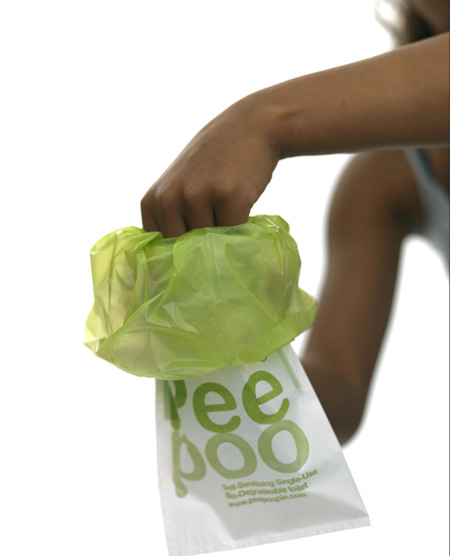
The bags are due for production later his year. Here's some more information from Peepoople:
--
The Peepoo bag is in the form of a slim elongated bag size 14 x 38 cm. Within the bag there is a thinner gauze that measures 26 x 24 cm. The inside of the Peepoo bags is coated with a thin film of urea. Without sacrificing ergonomic function the bag’s design is adapted in every way so that it might be manufactured at as low a price as possible and sold to the groups with weakest purchasing power in the world.
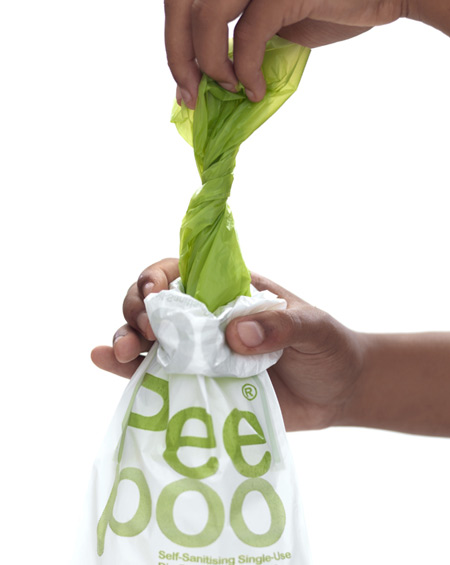
The Peepoo bag is designed to be used once, sitting, squatting or standing. If one uses it with only the hand, the thin gauze prevents all contact with the excrement. It can also be used by being placed in a cut plastic bottle or small bucket and acting approximately as a chamber pot.
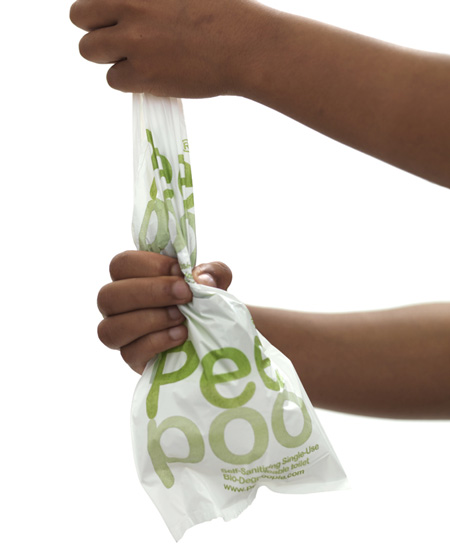
The Peepoo bag is a toilet which is not fixed to a particular place. It is simple to carry since it is small and weighs less than 10 grams. The only thing one needs to do is find a secluded spot where one can use it as a toilet.
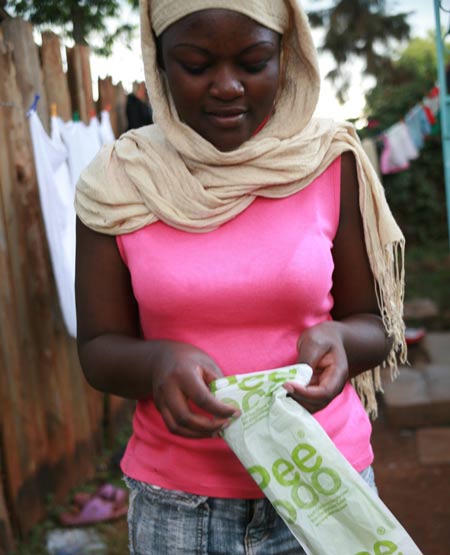
Peepoo bags are odour free for at least 24 hours after use and can thus be stored in the immediate environment.
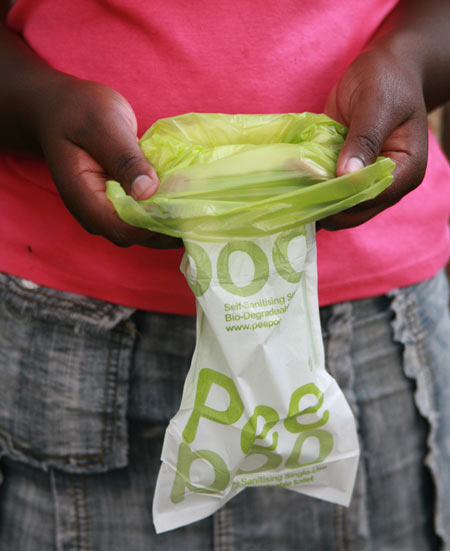
Peepoo bag is one of few sanitation solutions which require no water. The only water required is to wash the hands after use. This means that the traditional link between water and sanitation has been cut. A used Peepoo bag is clean to handle. It has become a waste that neither smell nor is dirty to take care of and collect.
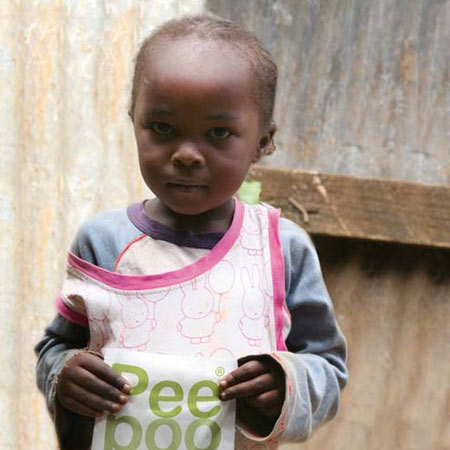
The inside of the Peepoo bag is coated with a thin film of urea. Urea is the most common fertiliser in the world and is a non-hazardous chemical. It is found, for example, in toothpaste or skin cream often under the name of carbamide. When the urea comes into contact with faeces or urine, an enzymatic breakdown takes place into ammonia and carbonate, driven by enzymes which are naturally occurring in faeces.
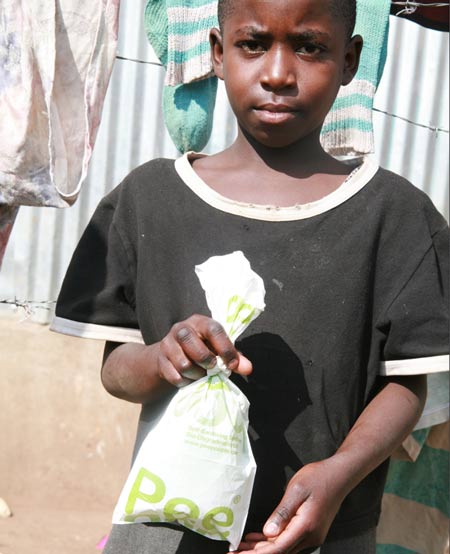
As the urea is broken down, the pH value of the material increases and hygienisation begins.
Organisms which produce diseases (pathogens) which may be found in faeces (bacteria, viruses and parasites) are inactivated within 2-4 weeks depending on the surrounding temperature. The presence in urine of organisms which cause diseases is at a considerably lower level than in faeces and the hygienisation of the urine occurs more quickly. With conventional urine processing, urine sorting, the primary source of contamination is derived from faeces; this risk does not arise here since the bag is a disposable toilet.
Untreated faeces cannot be regarded as hygienised until 1-2 years storage has passed. The urea treatment is the simplest and most efficient treatment available. In the end when the bags degrade in the soil, the ammonia acts as a harmless fertiliser taken up by the plants.
The bag is made of a high performance degradable bioplastic which meets EU standard EN13432. This means that the plastic not only disintegrates but also that the molecules are broken down into carbon dioxide, water and bio-mass. Already today, the plastic is produced to 45% using renewable materials. Peepoople intends, within the near future, to find a solution which is 100% renewable. The bioplastic comprises a mixture of aromatic co-polyesters and polylactone acid (PLA), with small additives of wax and lime. PHB represent alternative bioplastics.
When all pathogens have been inactivated, two to four weeks after use, the treated faeces constitute a high value fertiliser with a considerable market value. The fertiliser will mainly be a nitrogen fertiliser due to the added urea for sanitation. Other nutrients are also available for the plants and thereby improving the soil fertility. Additionally, the organic matter in the faeces will improve the soil structure and thereby the buffering capacity and the water holding capacity which in the long term will improve the possible harvest from the fields.
Since fertilisers are an expensive and scarce commodity in developing countries, it is possible for simple economic systems to develop informally through the collection and distribution of used Peepoo bags. Consequently, the used bags represent a local resource instead of a contaminant.
The bag’s design is adapted in every way so that it might be manufactured at as low a price as possible and sold to the groups with weakest purchasing power in the world. The price is extremely advantageous compared with all competing methods, for end consumers and for society since there are no investment costs related to the use of the Peepoo bag.
Peepoo bags require no infrastructural solutions for implementation. No buildings or pipes need be built. Nor is there any need for any overhead system or investment costs. Peepoo can be simply distributed and can thus meet the enormous demand in a highly efficient manner.
Investment costs for different sanitation solutions
Local costs for installation
(not including use, maintenance costs, water costs and emptying)
Flush toilet connected to sewer or septic tank 400-1500 USD
Urban dry or wet Eco San 675-1500 USD
Condominal sewers 75-600 USD
Dry vault urine diversion 35-400 USD
Improved pit latrine or pour flush toilet 40-260 USD
Basic pit latrine 10-50 USD
Soil composting ecosan 10-40 USD
Communal toilet/latrine (50 persons per seat) 12-40 USD
Peepoo bag 0 USD